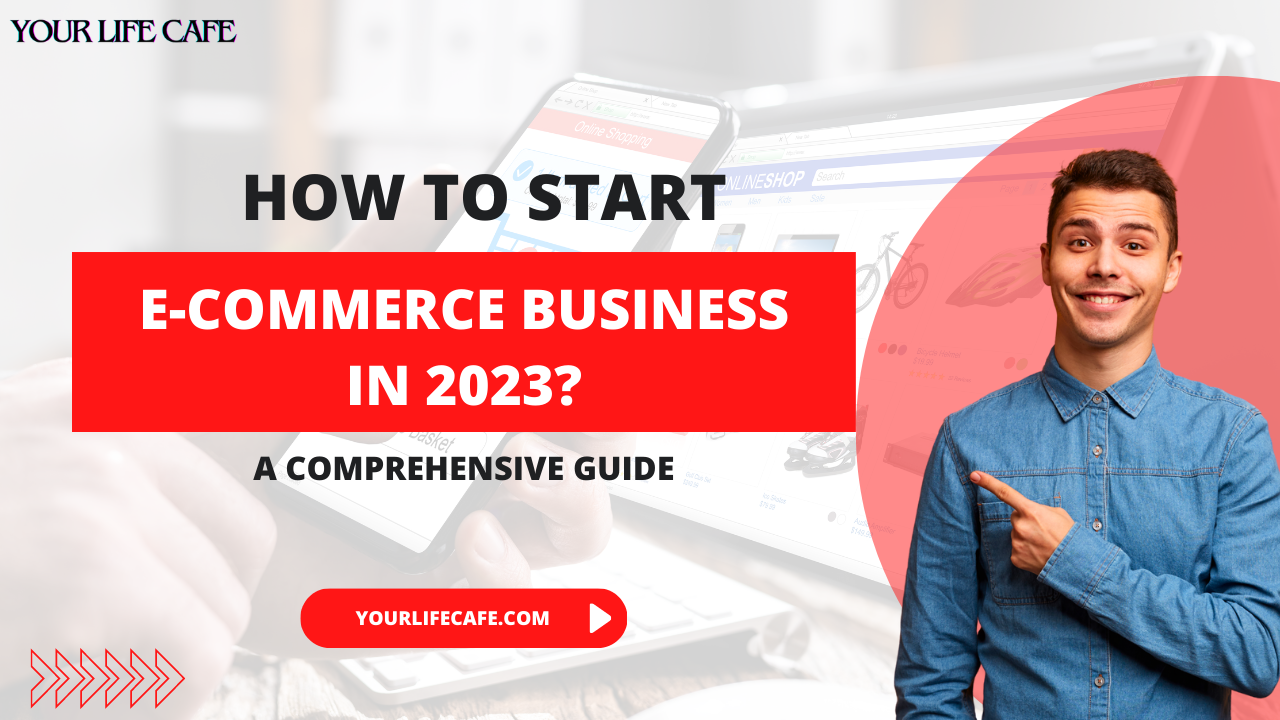Ecommerce has created a whole new universe of opportunities for business owners who want to expand their operations online. Moreover, Ecommerce businesses 101 have become a crucial part of contemporary business as online shopping is popular. Therefore, it makes sense that many entrepreneurs use ecommerce to launch or expand their companies.
Knowing where to begin can be difficult if you are new to the world of e-commerce. So where does this tutorial fit within that? First, we’ll walk you through every aspect of ecommerce, from defining the term to going through various business models. As well as discussing some of the best eCommerce websites and offering advice on advertising your online store.
What Is Ecommerce Business 101?
Electronic commerce, or ecommerce, is the term used to describe purchasing and selling products and services over the internet. It has enabled people to shop from the convenience of their homes and allows businesses to interact with clients worldwide.
Simply put, it is the act of buying and selling products and services online. Whether you’re selling tangible things, intangible products, or services, ecommerce enables you to connect with customers anywhere in the world and engage with them conveniently and quickly.
How Does Ecommerce Business Work?

Online purchases of goods and services are now much simpler and more practical thanks to the easiest eCommerce business ideas, which have changed how we shop. It is an overview of how Ecommerce business functions and the various business models available:
1. Product Selection:
Consumers use search filters or product categories to browse items and services on an ecommerce website and locate what they want. The website includes photographs, descriptions, and pricing information to assist clients in making informed judgments.
2. Shopping Cart:
Once customers select their desired products, they add them to their virtual shopping cart. Thanks to the cart, which keeps track of their purchases, they can change amounts or delete products before checking out.
3. Checkout:
Customers provide their billing and shipping information, choose a shipment option, and provide payment information during checkout. The ecommerce platform confirms the transaction and emails the consumer a receipt.
4. Delivery:
Following packaging and sending the products to the customer’s address, the e-commerce company completes the order. Also, some firms might provide same-day delivery or in-store pickup.
What are the Top Business Models in Ecommerce Business?
Several business models can be used by e-commerce companies to operate. Dropshipping entails delegating the manufacture and delivery of goods to a separate supplier so that the company may concentrate on the marketing and customer support. Purchasing goods in bulk from manufacturers and reselling them to merchants or customers after marking them up is known as wholesaling. Producing and selling goods directly to customers constitute manufacturing.
What are the Top Successful Ecommerce Businesses in 2024?
Successful ecommerce businesses include Amazon, which offers a wide range of products at competitive prices, and Warby Parker, which disrupts the traditional eyewear industry with affordable, stylish glasses sold exclusively online. In addition, these businesses offer exceptional customer service, unique products, and streamlined checkout processes.
Why Choosing the Right Website Platform is crucial for Ecommerce Business?

Businesses must consider their unique requirements and budget while selecting the best eCommerce websites. Although Amazon, Shopify, WooCommerce, and Flipkart are all excellent choices for building an online business, each platform has advantages and disadvantages of its own.
Because of its user-friendly design and many customization options, Shopify is a popular alternative for small and medium-sized enterprises. WooCommerce is a WordPress plugin that gives businesses who desire more control over their e-commerce website a lot of flexibility and customization possibilities.
Amazon and Flipkart are excellent choices for companies looking to reach these platforms’ sizable user bases. Flipkart provides a deeper understanding of the Indian market and its particular difficulties, whereas Amazon has a wider worldwide reach.
What Kinds Of Ecommerce Businesses Exist?
Ecommerce can take on as many shapes as there are online shopping options. However, the following are some typical business models which affect the e-commerce industry:
● B2C: Businesses sell to individual consumers (end-users)—It is one of the most common and popular business models with several variations.
● B2B: Companies sell to other companies. Sometimes the buyers resell the products to the customers.
● C2B: Customers sell products to businesses. It is one of the businesses that allow the clients to sell to other businesses.
● C2C: Customers sell the products to other customers. Businesses establish an online marketplace that connects consumers.
● B2G: Companies sell the products directly to the governments or their agencies.
● C2G: Customers sell the products to the governments or their agencies.
● G2B: Government agencies or the Government sells the products to businesses.
● G2C: Agencies hired by the Government or Government sells products to customers.
3 Best Ecommerce Businesses to Get Inspiration From
These are a few popular online stores from which you might get business ideas for your online store:
1. Amazon:
Amazon is one of the biggest eCommerce websites for online retailers worldwide, selling various goods and services, from food to gadgets and even books. It boasts an easy-to-use website and provides quick and dependable shipping alternatives. Also, you have your own UPI services and gift cards. You can do many things, and also one of the places to list your products. Amazon also has a section for affiliate marketing.
2. Warby Parker:
Warby Parker is an online store that offers reasonably priced and fashionable eyewear. Moreover, it also provides free shipping and returns, a virtual try-on option, and also includes a charitable donating scheme.
3. Glossier:
Glossier is a beauty company that promotes there products using social media to communicate with customers and advertise its products. It offers several skincare and beauty products and a free shipping policy on purchases over $30. Their website is easy to use and accessible.
7 Steps To Building Your Own Ecommerce Business Store
Although creating an Ecommerce store from scratch can seem impossible, it is possible with careful planning and execution. You can easily learn how to start an eCommerce business. The steps you must follow to build your online store are as follows:
1. Choose A Product:
A product to sell is the first step in creating an online store. Therefore, it’s crucial to have eCommerce business ideas to pick a product that both the market and you are passionate about.
2. Choose A Website Platform:

The next step is to select a website platform for your E-commerce store. Again, consider features, price, and convenience when choosing a website platform.
3. Create Your Website:
Once you decide on a platform, you can begin building your website. Choose a user-friendly theme or layout that accurately represents your business.
4. Add Products:
As soon as your website is live, add items to your store. Provide each product with both a descriptive description and high-quality photos.
5. Setup Payment And Shipping:
You must set up a secure payment gateway for your consumers to purchase from your website. To simplify customers’ pay, consider providing a range of payment alternatives, including credit cards, PayPal, and Apple Pay.
You should also establish shipping costs and alternatives for your merchandise. If you want to give your consumers dependable and economical shipping choices, think about working with shipping companies.
6. Test And Launch Your Website:
It’s necessary to thoroughly test your website before launching it to ensure everything works according to plan. For example, test the payment gateway, delivery choices, and checkout procedure to ensure everything operates correctly. Then, you can make your website public if you’re happy.
7. Promote Your Ecommerce Store:
As soon as your Ecommerce business is operational, you should begin promoting it to attract clients. To advertise your items and increase website traffic, use social media platforms, email marketing, and search engine optimization (SEO).
Conclusion:
In the beginning, it can be tough and challenging to Start and grow a successful ecommerce business as it takes hard work and commitment, but it can be rewarding and profitable with the right tools and strategies.
Therefore, you must choose the right website, product, and marketing strategy. Then, you can build a virtual store that meets your customers’ needs and helps you fulfill your eCommerce business ideas and goals.
Remember to stay up-to-date with the latest trends and technologies to stay ahead of the competition. It doesn’t matter if you’re starting a new Ecommerce business or growing an existing one, the customer is the king, and you should provide exceptional products and services to ensure their satisfaction.


